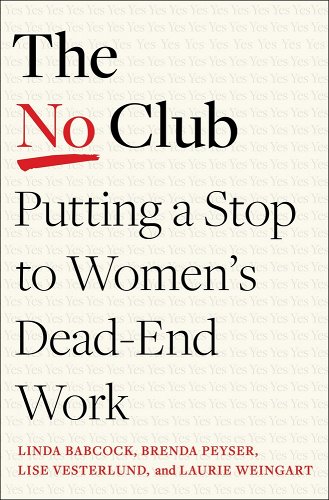Creating a Purposeful Workplace Experience
With the major threat of the pandemic behind us, the big question is unavoidable: should we all return to the office? If you feel like opinions are sharply divided, well, you’re right!“A recent survey from McKinsey found that 52% of employees prefer a mix of both: they love that hybrid workplace, valuing flexibility, but also recognize the benefits of working in person,” said moderator Lydia Dishman, senior editor for growth and engagement at Fast Company. “And research from Gallup shows that employees who feel engaged in their workplace are more likely to want to return to the office, particularly for team collaboration and relationship building.”Deloitte reports that organizations with a strong focus on employee experience see a productivity increase of up to 20% and it also helps with turnover rates. “Ultimately, it's up to the leaders to set the policy and model what the ideal workplace situation looks like,” Dishman said during an executive panel discussion at From Day One’s October virtual conference.Corporate leaders have been saying it a lot lately: We want to make the office a magnet, not a mandate. They can make that a reality by creating the kind of experience that re-engages workers with their leaders, their colleagues, and their roles. How can employers be intentional about the workplace as a welcoming community and place where workers can fulfill their need for connection and purpose, inclusion and belonging?Encouraging In-person InteractionIt can be hard to encourage in-person interaction, even when back in the office, when employees are plugged into a post-pandemic productivity mindset of sitting at a desk, powering through tasks, and then going home. Providing team leaders with additional support can help them facilitate the organic in-office interactions that so many of us have been missing.“We’re trying to guide leaders with tools. At CSL, we’ve just launched a series of tools called Moments That Matter,” said Kim Robbins, senior director, HR change and culture at CSL Behring. “It’s encouraging leaders to coach their teams about being intentional about the work that needs to happen.” The training helps them understand the difference between moments that require ‘heads down’ focus time alone in the office or at home vs. times when they should be providing face-to-face support, such as when onboarding new hires. “Could we be encouraging people to randomly meet for lunch or come together for events? We’ve positioned all this in a framework about planning the way you work, so that people could be intentional and do some assessments for who might be missing in their network that could really help them feel that greater sense of connectivity and belonging,” Robbins said.Executive panelists from JLL, HR Media & Co., CSL Behring, and Lam Research spoke about "Creating a Purposeful Workplace Experience" (photo by From Day One) Antoinette Hamilton, global head of inclusion & diversity at Lam Research, says that employee resource groups, which first came into prominence as a way to stay virtually connected during Covid, are now another structured way to encourage organic in-person interaction. ERG’s can “be a place to connect, meet some new people, and do something for a great cause,” Hamilton said.Taking an Empathetic Approach“Empathy is a foundational principle of making a workplace someplace you want to go to,” Dishman said. Much of empathy, says Judith Ojo, CEO of HR Media & Co., comes down to open communication. “Some employees are not fond of being in the office. Maybe they can’t get enough work done or they’re constantly interrupted,” Ojo said. Make sure you understand where your employees are coming from and what they are looking for, then respond in kind. For the issues Ojo noted, creating a quiet zone, collaboration space, or wellness area for meditation can go a long way to making an employee feel comfortable, seen, and supported. Such an adaptive workspace can be helpful for fostering inclusion.Empathy can mean different things for different people, and leaders need to be prepared to take the cue from the employees. “I think listening sessions are really important. The key is you’re not trying to solve the problem. You’re listening,” said Tina Leblanc, Ph.D., head of DEI, Americas at JLL. “You listen. You pause. You come up with a solution. And then go back and say, ‘What I heard was…And these are some ideas.’ And then also ask them, ‘What do you feel we can do as a team to be more inclusive?’ That way you’re not putting your own biases [onto it].” Regular employee surveys can encourage employees to come forward.Building the Ideal WorkplaceFor many employees, Dishman says, it seems like a hybrid environment is the ideal. But making organizations cohesive and productive in a hybrid setup can seem far easier on paper than it is in practice. “Building trust within hybrid teams is really crucial to ensure collaboration and productivity,” Hamilton said. Her team does this by leaning into their core values: clear communication, mutual trust and respect, and transparency. Her organization wants its teams to feel cared about, and have created a manager track with training that incorporates inclusive leadership.Senior leaders need to communicate goals and parameters, Dishman says, so that the office continues to be a hub of connection – and so that everyone doesn’t come into the office two days per week only to spend those days on Zoom. “One thing that we have is collaborative conversations, where we bring people throughout the whole office, and even in different buildings, together,” Leblanc said. The company also encourages group lunches on Mondays, coffee on Wednesdays, and desserts on Fridays. The key is to keep thinking, ‘How do I make this more enjoyable?’ to encourage people to get up, get dressed, and commute into work. Employees should leave feeling happy and productive, says Leblanc.Hamilton says managers should be given the tools to be able to articulate the benefits of on-site work. “You’ve failed if you walk into an office and everyone is on a Zoom call,” she said. “We have to be intentional about how we work differently when we come back into in-person environments,” she said. “Managers are the catalyst for getting that done in a consistent way across organizations.”Robbins’ office encourages employees to be intentional about their meetings and not jam their schedules unnecessarily through a collaboration audit. “Do you really need to still be a part of all these meetings? Could you just only attend when there’s an agenda topic relevant to you, where you're a subject matter expert or [the] person to move this goal forward? Or could you delegate it to a junior team member to give them exposure and have greater connectivity in the office?” she said.Her organization has also invited “puppy trucks” from local animal shelters to visit so employees can play with puppies during breaks. Such activities should feel organic, and companies must be careful to avoid scheduling what feels like “mandatory fun.” Again, employees will look to their leaders to set the tone, so managers should be the first ones to dive into activities and bring the team along, Leblanc says. Let them know attendance is optional, but if they do go, ask them to bring a friend. Such participation also makes senior leaders feel more accessible. “Humanize yourself,” Leblanc said.Katie Chambers is a freelance writer and award-winning communications executive with a lifelong commitment to supporting artists and advocating for inclusion. Her work has been seen in HuffPost and several printed essay collections, among others, and she has appeared on Cheddar News, iWomanTV, On New Jersey, and CBS New York.






